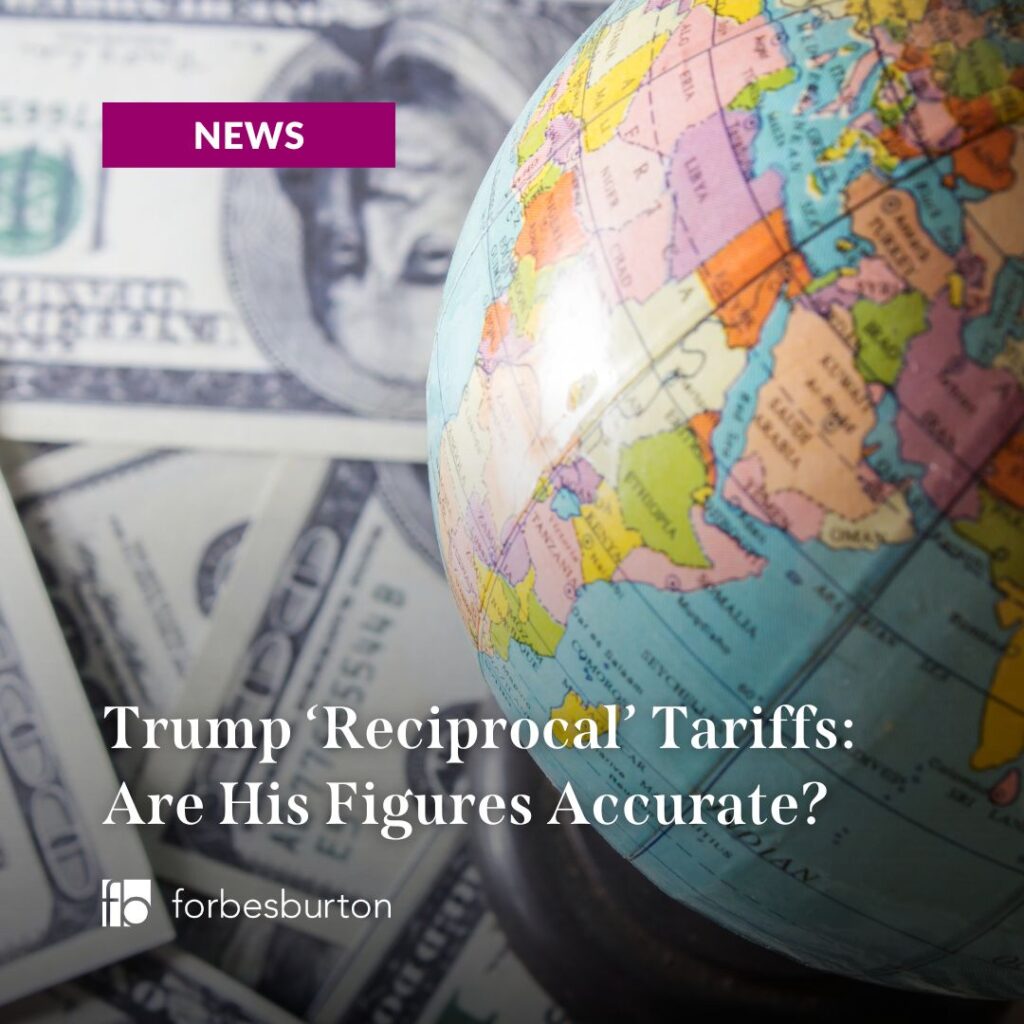
Wednesday saw US President, Donald Trump introduce a range of tariffs on goods imported into the US that will have seismic repercussions across the globe.
The measures, which Trump calls ‘reciprocal tariffs’ are the latest addition to an escalating trade war between America and the rest of the world. Unveiling a chart detailing the tariffs he believes other countries are charging the US, and the newly installed tariffs they will charge, Trump claimed that his actions will “make America great again. Greater than ever before”.
Who has been affected?
The US have laid a baseline 10% tariff on goods entering America, meaning that every country is affected. Those that Trump has deemed “the dirty 15”, though, will face much higher charges.
These 15 countries are those that have been identified as having the worst trade agreements with America in terms of trade deficits and tariffs.
Elsewhere, Trump also implemented a blanket 25% tariff on all foreign cars.
How did the UK fare in these changes?
In relative terms, the UK got off lightly. While the 10% levied will still cost UK businesses millions, the tariffs slapped on others, such as the 20% on the EU, would have had catastrophic effects and likely caused thousands of job losses.
Who came off worst?
There’s some scope to speculate that the American public will suffer the most with manufacturers and importers likely to pass any extra costs on to the end customer. In terms of countries though, there are some that have incurred huge tariffs.
As mentioned above, the US have imposed a 20% tariff on EU goods, which they claim is a response to an EU tariff on US goods of 39%.
Saint Pierre and Miquelon (no, me neither), came off worst with a 50% tariff ‘reciprocating’ a 99% tariff that the US state the islands have on their goods. Cambodia also took a big hit with a 49% tariff, with Trump claiming that they have 97% tariffs on US goods.
Recent tensions with China show no sign of abating with a 34% tariff implemented on Chinese goods. Trump’s chart shows that China has a 67% tariff on US goods.
Looking at the rates charged by other countries on their chart, Trumps ‘reciprocal’ tariffs seem to be quite fair and even generous in some cases, but are those figures entirely accurate?
How has Trump’s team arrived at those figures?
There’s some confusion as to how the Trump administration has arrived at some of the tariff percentages they claim are charged by other countries.
Nobel Prize-winning economist, Paul Krugman labelled the figures stated by the US as “completely crazy”, and stated that many of the tariff rates quoted by the White House are “complete fabrications”.
Talking about the percentage attributed to the EU specifically, he asked “where does this 39 percent number come from?”
Indeed, The World Trade Organisation have the EU’s average tariff rate at 5%, while The European Commission says that the average tariff on goods traded between the EU and America is around 1%.
The Financial Times noted that the figures appear to have been worked out with trade deficits in mind rather than the actual tariff they charge. They use Bangladesh’s claimed tariff rate of 74% as an example. Bangladesh’s exporting of $8.4bn worth of goods to the US last year would give it a $6.2bn trade deficit. 6.2 divided by 8.4 becomes 0.738, corresponding to Trump’s 74% tariff rate.
The White House also claimed that Canada had a 300% tariff on American butters and cheeses. While this is true in a sense, it was part of a negotiation with the previous Trump administration that has never been implemented as it would only ever come into play if US exports exceeded their tariff rate quotas. Otherwise, there are no tariffs on these items at all.
Did any countries escape Trump’s tariffs?
Russia was a notable exception to Trump’s global tariffs.
White House Press Secretary, Karoline Leavitt explained that this is because existing sanctions “preclude any meaningful trade”.
Despite this though, America still currently trades more with Russia than it does with others that feature on the list, such as Mauritius and Brunei.
Which UK industries will be hit hardest?
The automobile industry will take a huge hit, with a 25% tariff on vehicles. Elsewhere, those exporting chemicals will find it tougher, as will the Scotch whisky sector which counts the US as one of its biggest customers.
Are you worried how these tariffs could affect your business?
UK businesses have had to contend with setback after setback over the last few years. Global pandemics, cost-of-living-crises, and energy price hikes have all contributed to making operating a business more difficult than it has been for some time.
If you’re concerned that your company will struggle to absorb these and other costs in the future, you need to seek help before it becomes an issue.
We have specialists on hand that can help you to facilitate turnaround strategies, sell your business, or close down your company depending on the best route available to you. Call us on 0800 975 0380, or email advice@forbesburton.com for a free consultation.

Ben Westoby
ben.westoby@forbesburton.com
Related Articles
We're here for you.
As a dedicated team of Advisers and Consultants our aim is to help you fix the issues and solve the problems within your business.
Find out more →

